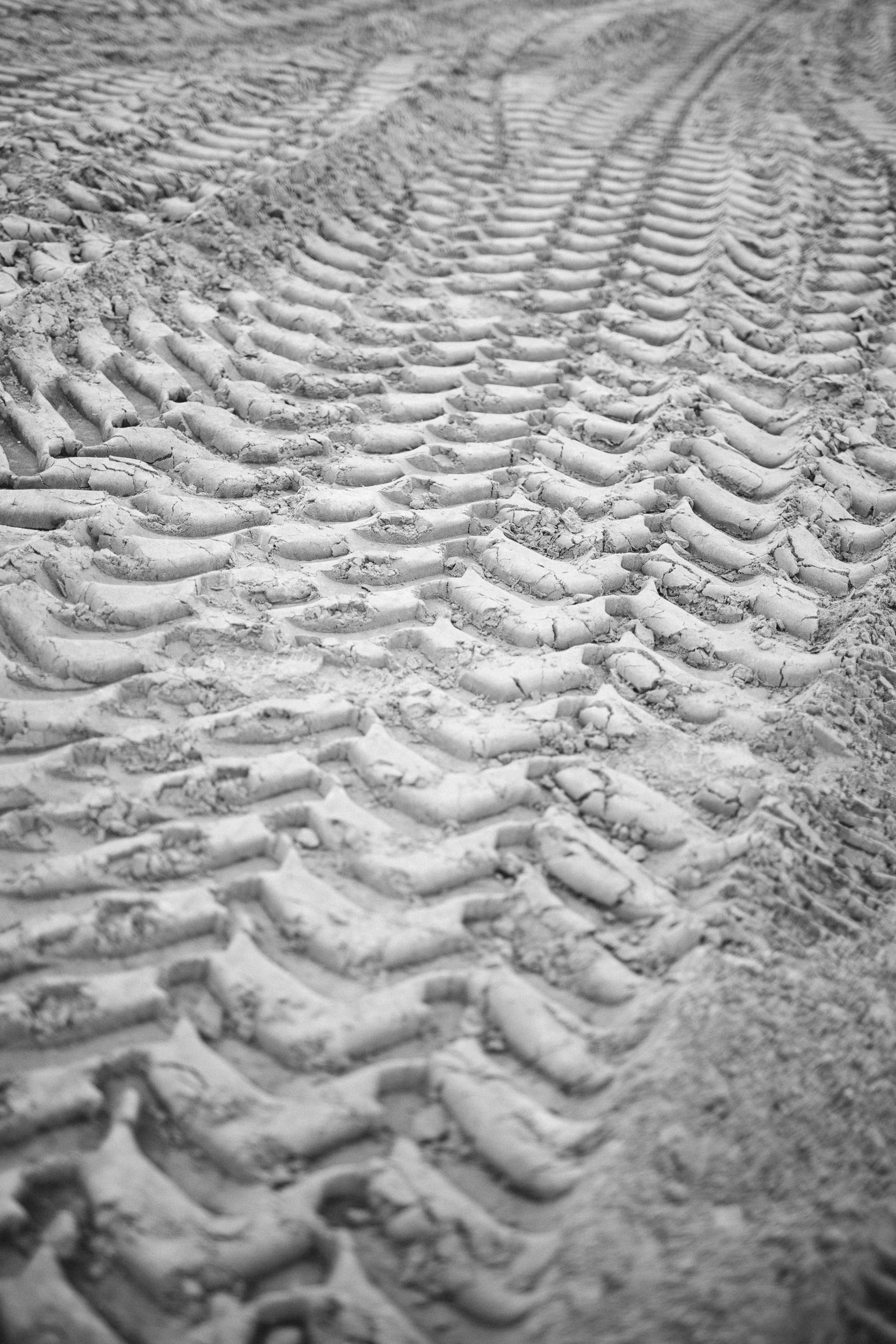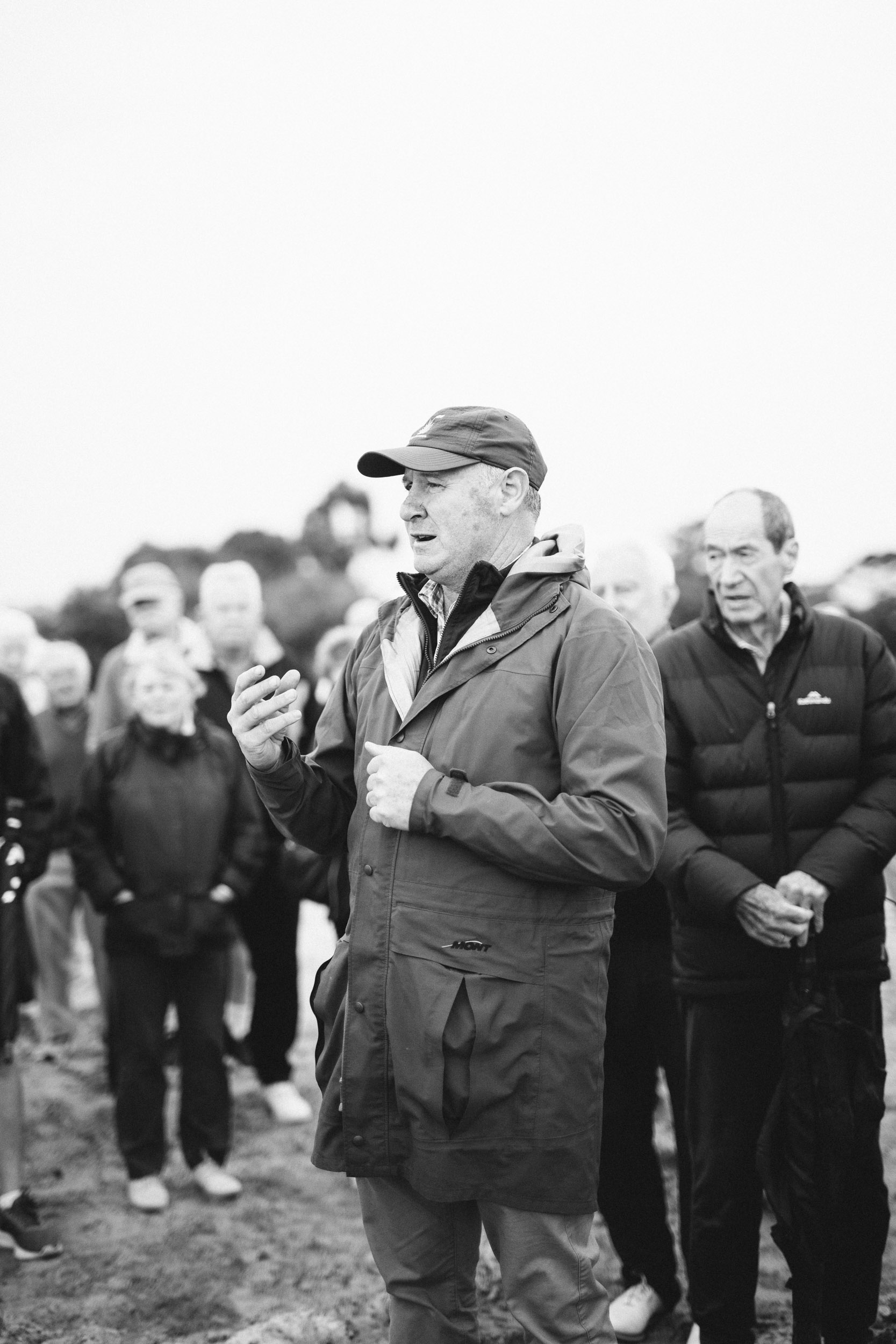The National Journal Presents
A Journey Through the Future
Step into the future of Long Island Golf Club with our exclusive course walk recap.
Join Ashley Mead and Leigh Yanner as they unveil the exciting changes transforming this beloved course.
Featuring quotes from Ashley Mead and Leigh Yanner.
Written & Photographed by William Watt
On an overcast but calm day at Long Island Golf Club, a group of curious and passionate members gathered for a walk through the holes-in-progress by OCM Golf. Led by Golf Course Architect Ashley Mead (OCM Golf) and Director of Courses at The National, Leigh Yanner, the tour promised an exclusive inside look at the remarkable transformations taking place out on course. It was also a chance for members to see behind the curtain of what really goes into making a golf course. With large parts of the course stripped back to the dark sandy soil beneath the typically pristine fairways, and green complexes looking more like giant sculptures than golf holes, it’s a fleeting and dynamic moment in the history of the course.
After a brief introduction, the group made their way to the first stop, the 9th hole green complex. Ashley began to paint a picture of the changes in store. “I’ll give everyone a minute to get the shock off their face! So… The ninth green is in exactly the same location,” he explained, gesturing towards the green. “It’s going to come out a little bit further in the front part of the green. And the reason for that is because we have an alternate hole coming into this same complex. Standing here, if you were to look towards the back of the 16th green, that’s going to be the alternate tee that plays up to this green. So as we shape the green complexes on this project, we have to be thinking about these different approach angles and make sure the course plays just as well from both directions.”
The rest of the change to the 9th hole is that the tee itself has been lowered a little over a half a metre, especially at the front, and the bunkering on the left of the green has all been reshaped.


Moving on to the 8th hole, there were some significant improvements on the horizon. “The eighth has pretty much stayed as it was in terms of location and shape,” Ashley said. “But we’ve emphasised this dramatic bunker on the left of the approach that brings to mind the short par-4 10th at Royal Melbourne. The other main change here is that we’ve expanded the fairway to the right, all the way up onto the 9th tee,” Ashley pointed out. “So in the past you might get stuck up there in the rough, and it’d be difficult to get back down to the green. But now any ball that lands right of the green with enough pace on it will kick down and feed down onto that green. Hopefully we can get a few more pin locations behind the bunkers on the left that if you look at them from the fairway look terribly scary. But the local knowledge will be hit to the right, towards those Norfolk Pines, and it’ll just feed down to the left, which we think will be a really fun shot to play.”
“What do you reckon this will be ranked? You must have a goal in mind?” asked one of the attendees to Ashley between holes. “I don’t think about rankings more than I think of making it the best it possibly can be. But we’ve got some nice results with some other courses, so hopefully it’s around that ballpark. It’s a good bit of land.”
Throughout the course walk, a recurring theme was the commitment to improving playability and enjoyment for golfers of all skill levels. Leigh emphasised this point, saying, “A big part of this golf course is encouraging people to play off different tees, to put different strategies and enjoyment into the golf course. On many of the holes, it plays very differently from the forward tees to the back tee.”
Ashley agreed, saying “A lot of golfers, especially in Australia, seem to have this fascination about having to play from the back tees all the time. I think we have got to get away from that and just play from the best tee for your game, the tee that is the most fun for you. Everyone’s going to stay involved longer in the game, and have a better time doing it, if they pick the right tees for them. Maybe we need to think about something as simple as changing up the colours a bit, so there isn’t as much of a stigma around playing off the red tees.”
Leigh continued, “This philosophy applies to many of the green complexes too. They might look more intimidating or dramatic, but when you finally get to play it, you’ll see how much the contours can add to the variety of shots available. Sometimes they might feed into bunkers, whereas others will help you onto the putting surface. And we’ll have a bigger range of pin positions to work with too that can be used to alter strategy all the way back to the tee shot.”

Long Island – Course Walk with Ashley Mead and Leigh Yanner

Sand and Water: The Foundation of Excellence
One of the most fascinating aspects of the course walk was learning about the various sand types found throughout the Long Island property and their crucial role in creating an exceptional golfing experience. As Ashley explained, “As much as possible we want to use the natural Sandbelt sand – it is the exact same profile as you find at Kingston Heath, Royal Melbourne and so on. It’s really good sand, and it’s what allows us to build the greens right up to the bunker edges for the unique Sandbelt look.”
However, while the natural sand found on the property is excellent for most aspects of the course, the team at Long Island decided to bring in a specific type of sand for the greens. Leigh explained the reasoning behind this decision:
“When constructing the greens, we go down 400mm and then we bring in the sand to ensure consistency through the whole project. Across a two-year project, and on a site where the sand profile can vary quite a lot across the property, it is important that the greens give us that assurance of drainage, compaction levels that we want.That way we can guarantee from the first green that we build, right through to the practice facilities, that there is a consistency to the putting surfaces. Once in place that sand will be fumigated to ensure there are no weed seeds surviving, and after 21 days we can hydroseed the surface of the greens which will eventually become our putting surfaces.”
He elaborated on the variations in sand types across the course, saying, “You’ll see as you are walking around, we have multiple layers of sand here. It goes from a heavy top soil, down into a lighter grey profile, then it’ll go into what we call ‘coffee rock’, and finally down into clay. And every pocket is different in terms of the depths and levels of those layers.”
The use of native sand combined with specially selected sand for the greens shows the expertise and meticulous planning behind the Long Island course improvements. By leveraging the natural assets of the property and incorporating the latest in golf course construction techniques, the team is creating a course that will offer a world class playing experience.
Leigh also discussed some of the options available to the club for water going forward.
“So another unique thing is with the irrigation – the previous irrigation system used to just spray fairly broadly and often off into the trees. With the new irrigation system, no water will go in the trees – on the outside of each hole there will be half circle sprinklers directed into the middle of the fairways, so much more targeted. In addition, every hole has two pipes – the white pipe will carry the greens water, which will be a combination of town water and our own on-site bore water. Then the purple pipes are for all the couch surfaces – the tees, surrounds and fairways – which will be irrigated with recycled water from the Eastern Treatment Plant. Even through the severest of droughts that water is still available, so that’s a big win and it’s allowed us to do what we have in terms of additional turf areas.”
As the course walk drew to a close, the excitement for the future of Long Island was palpable. “It’s exciting,” Leigh remarked. “It’s a grand old golf course. You can see the grandness in it, particularly the bunkering, and combine that with the greens starting to look quite dynamic, it will be a great combination.” One participant shared their initial apprehension and newfound enthusiasm, saying, “To be quite honest with you, I would’ve been happy if they had just redone the greens and fixed up a couple other little places here and there. But to see this amount of change is really exciting.” The future of golf at Long Island looks bright, and this early preview is just the beginning of an exciting new chapter in the club’s long history.



